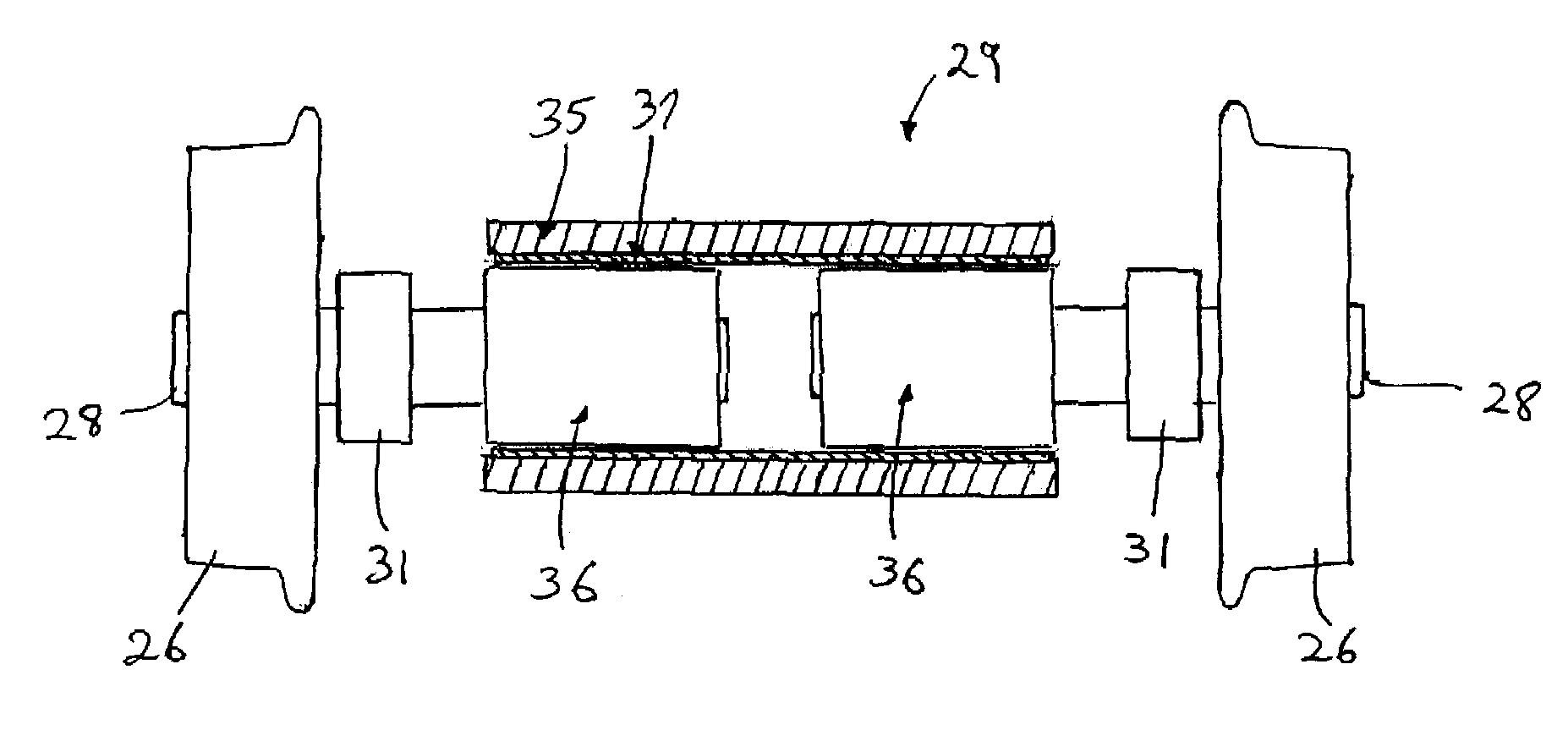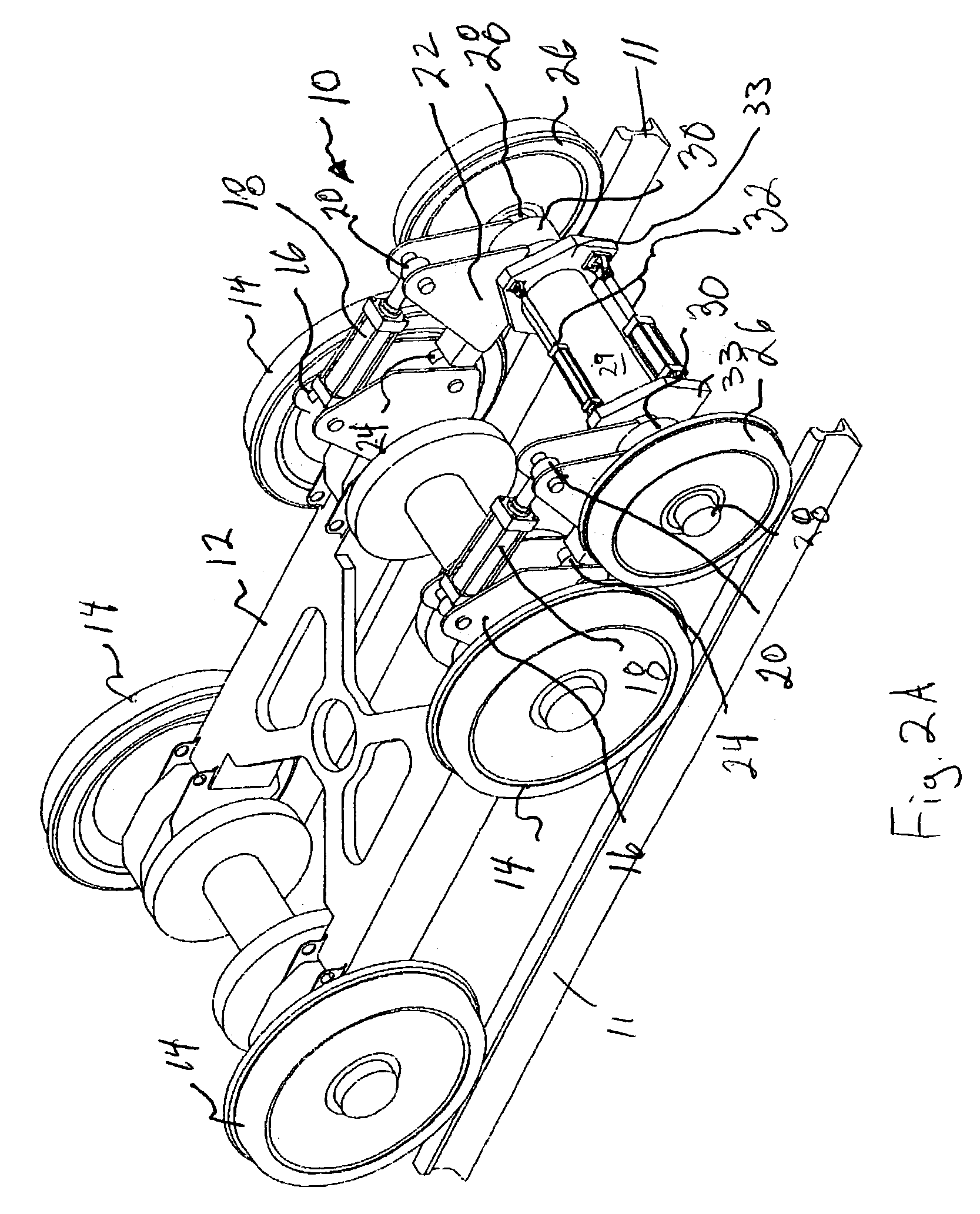Inner bearing split axle assembly
a technology of axle assembly and split axle, which is applied in the direction of mechanical measuring arrangement, instruments, and ways, can solve the problems of total significant damage to the measurement system of the gauge restraint, and the derailment of the railcar, so as to reduce the balancing moment, improve the tracking of the rails, and reduce the size, weight and cost
- Summary
- Abstract
- Description
- Claims
- Application Information
AI Technical Summary
Benefits of technology
Problems solved by technology
Method used
Image
Examples
Embodiment Construction
[0034]FIG. 2A shows a split axle assembly 10 for use in a gage measurement system in accordance with one embodiment of the present invention. As will be explained below, the split axle assembly 10 significantly reduces the balancing moment required so that the associated load bearing components may be reduced in size, in weight, and, correspondingly, in cost. In particular, to reduce the balancing moment, as well as the size and weight of the gage measurement system, the split axle assembly 10 of the present invention as shown in FIG. 2A is provided with inner bearings as described in further detail below which are positioned inboard of the wheels of the split axle assembly 10.
[0035]The inner bearing split axle assembly 10 shown in FIG. 2A is illustrated as being mounted to a truck 12 of a railcar (not shown) having four track engaging wheels 14 that roll along the track 11. Of course, it should be understood that the term “railcar” as used herein broadly refers to any vehicle desig...
PUM
 Login to View More
Login to View More Abstract
Description
Claims
Application Information
 Login to View More
Login to View More - R&D
- Intellectual Property
- Life Sciences
- Materials
- Tech Scout
- Unparalleled Data Quality
- Higher Quality Content
- 60% Fewer Hallucinations
Browse by: Latest US Patents, China's latest patents, Technical Efficacy Thesaurus, Application Domain, Technology Topic, Popular Technical Reports.
© 2025 PatSnap. All rights reserved.Legal|Privacy policy|Modern Slavery Act Transparency Statement|Sitemap|About US| Contact US: help@patsnap.com



